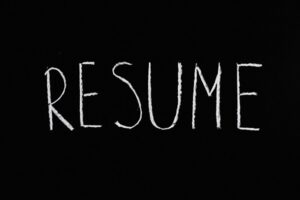
The application process can both be daunting and tedious, but it doesn’t have to be that way. One way to look at applications positively is to take it as an opportunity to step back and reassess the qualifications, skills, competencies, and growth that you have achieved in your career so far. A lot of people do not even have the time to pause and recollect how they have been able to grow and develop in their job progression, and the job search and applications process is an especially important period where you should be looking at how your resumes and other supporting documents express your skills and experiences in one coherent and compelling package. A selection criteria document is one of the best ways to contextualise how well you should be able to fulfill certain roles, thus letting recruiters know how you plan to accomplish the duties that are assigned to the role.
Key selection criteria are standards and expectations that must be met by applicants. It demonstrates in clear and strong situational examples how an applicant has navigated through certain scenarios in the past, with the goal of convincing the recruiter that they are indeed worth considering for a job. In order to successfully go through the application process, you must always directly address the criteria as this is the most important part of your application package. By having a strong selection criteria response document, you give yourself better chances at being shortlisted for an interview. Moreover, interviewers often base their questions around these criteria when conducting face-to-face interviews.
Where to find selection criteria
Selection Criteria or Key Selection Criteria are often found in the Position Description or Job Description document, the outline of the job roles and responsibilities that are often posted by companies and recruiters in various recruitment channels. Selection Criteria may be explicitly labeled, but sometimes, you will have to look within the document to see which selection criteria items must be addressed. Note that each position will have its own unique criteria, so you will have to write separate, unique responses to address each criterion.
The STAR Format
There are many ways to complete selection criteria documents, but one of the most prescribe methods is by addressing the selection criteria through the STAR Format. The STAR Format integrates four important factors, namely: Situation, Task, Action and Result. The Situation and the Task sections provide the context for the specific situation, and the Action and the Results describe the proactive steps taken to ensure that results and expected outcomes were achieved. The STAR Format arranges thoughts in a coherent and logical manner, and it gives the recruiters a clear idea of your involvement in a certain task. Mainly, the STAR format should be able to state in clear and specific terms how you fit these criteria, so a strong, highly relevant example must always be used. Here is an example:
Role: Team Leader
Selection Criteria: Must be able to communicate with influence and mentor junior staff.
S (Situation)
As a manager, I am tasked with the role of providing mentorship and effective leadership to my junior staff and colleagues. I model ethical and responsible behavior by always ensuring that I focus on my staff’s professional development. When one of my staff members was obviously lagging behind and would chronically fail to meet deadlines, I took the initiative to counsel and provide advice so that they will be able to improve their performance.
T (Task)
To be able to communicate and provide sound advice to the staff member, I needed to take him aside and sit him down in a manner that will allow him to feel comfortable and to be in a safe, non-judgmental space so that he will be encouraged to discuss his issues.
A (Action)
I encouraged him to talk openly without fear or repercussions or judgment, as it was important for him to be very honest about what was affecting his performance. It turned out that he was distressed because of problems at home. He was overwhelmed with problems, and it was affecting his performance at work. I suggested different measures like talking to management about possibly temporarily reducing his work hours so that he could take more time to resolve issues at home. I also recommended a brief leave so that he can sort out his personal affairs. I also gave him recommendations to seek out advice from our company’s professional development department so that he can address his HR concerns and look at his options.
R (Result)
After our discussion, he was encouraged to speak to a HR supervisor to discuss the possibility of taking a few days off. We were able to make arrangements for his temporary replacement, and he was able to come back to work after a week with renewed enthusiasm and determination to finish the job. As a result of my intervention and my counselling, I was able to present options so that the staffer was able to recover from being affected by personal issues at home. This improved his performance, and he was able to contribute effectively to the team.
Writing tips
The previous example is just an illustration of how a STAR response is approached. However, you should be able to fully utilise the method in order to tell a detailed story of how you were able to address the criteria. Be very specific and provide strong examples that illustrate actual, measurable and quantifiable results. Cite numbers, statistics, and positive outcomes, and also, detail the effects and the results of your initiatives in a way that shows significant improvement.
When writing your selection criteria responses, it is important to note the limitations or special instructions that recruiters often include on the job description. Some job description forms may have certain requirements or instructions on the format, page count, and the number of words. Look for these special instructions before beginning any writing exercise, as it is important to be within the prescribed format. Furthermore, some criteria may require a word limit as you may be required to paste and submit these responses in an online form or template. Staying within the word count guarantees that you will not be discounted or disqualified due to technicalities, as is a regular occurrence. Addressing criteria in itself is an exercise in discipline, following instructions, the ability to address requirements. Therefore, you should take this opportunity to make a good impression and to make your mark even before you meet the recruiters.
A well written and compelling selection criteria document will not only let you stand out from your peers, but it will boost your opportunities to highlight special projects or tasks that will give you an edge in a highly competitive position. Focus on getting your selection criteria up to a certain standard by directly addressing what these criteria are asking for.
You can also rely on resume writing services like Melbourne Resumesto assist in you in accomplishing your selection criteria requirements. We are experience in filling out criteria documents that land our clients prestigious and coveted roles. Our expertise is in crafting well-composed criteria responses that strategically outline the strengths and special capabilities of our clients. Contact us today to know more about how Melbourne Resume scan help you get started on your way to writing and completing a comprehensive, factual, and impactful selection criteria.



Melbourne Resume Professionals, Suite 295, 189 Queen Street, Melbourne, VIC, 3000
Call us: 1300 174 435
Email us: [email protected]